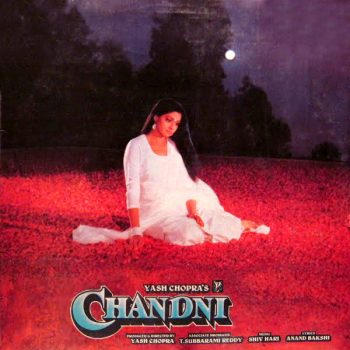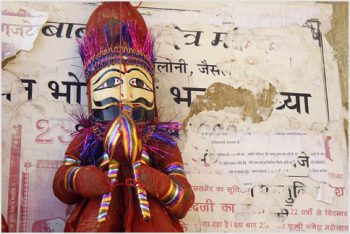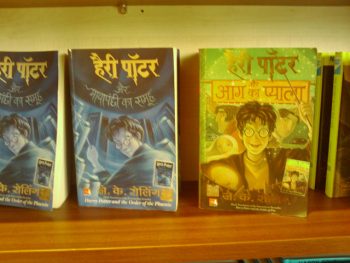5 Essential Tips for Learning Hindi Posted by Rachael on May 16, 2017 in Hindi Language, Uncategorized
Learning a language as an adult, as opposed to as a child or a young adult, is a whole different ball game. Most children, and even some young adults, pick up a language without an inordinate amount of effort––their brains are a bit like sponges, soaking in any new information at the drop of a hat. As an adult, learning a language has a whole new set of challenges (as well as rewards) as your brain has become a bit “set in its ways,” so to speak. This is by no means my way of saying that learning a language as an adult is hopeless––far from it. But, in order to get the maximum amount of enjoyment out of learning a new language (because it can be immensely enjoyable), we all need to tweak our mindsets a bit: perfect fluency, equal to that of a native speaker, should not necessarily be your end goal; and, in fact, there is no such thing as an “end goal” after which further learning is not necessary if you wish to maintain and improve your fluency in a language. Learning a language as an adult is a constant, lifelong progression of peaks, plateaus and valleys, and it can provide you with a never ending set of challenges and learning opportunities. So, sit back, relax and delve into the true enjoyment of learning a language rather than focusing on the achievement of rigid goals. I’ll try to help you along the way with 5 tips I’ve found useful in my lifelong journey to learn Hindi.
Understand the difference between transitive and intransitive verbs
This is a very important concept in the Hindi language; armed with this knowledge, you can conjugate verbs in the past tenses correctly. Being able to differentiate between transitive and intransitive verbs will help you know when to use the “ne” (ने) particle and, thus, how to conjugate the verb in the sentence (either to agree with the subject in gender and number or to agree with the object of the sentence in gender and number). This is an essential concept that you should master: transitive verbs take an OBJECT, while intransitive verbs do not and are usually verbs of movement and/or action.
If you’re a bit foggy on this, I recommend referring to my blog on the subject: available here
Immerse yourself in Hindi-language culture
One of the best, easiest and most enjoyable ways to learn Hindi is to totally immerse yourself in Hindi music, movies and children’s books (and, when you progress further, novels or other, more difficult, types of reading material). This type of immersion, while not as intensive and beneficial for your language learning as staying in a Hindi-speaking region for a considerable amount of time, is still essential for maintaining and improving your fluency. Consistent immersion of this type will habituate your brain to the sounds of the language and its particular turns of phrase; one recommendation is to make a note of at least one new word or phrase everyday that you hear in a song or a film or read in a book, look it up later and try to remember its meaning with the use of flashcards or some type of mnemonic device, whatever works for you.
Embrace the idea that most sentiments cannot be directly translated from English to Hindi and vice versa +
Adopt a different, ‘Hindified’ mindset
If you are a native English speaker and attempting to learn a Romance language like French or Spanish or a Germanic language (like English) such as German, you might be able to get away with the idea that most or at least some ideas can be directly translated from your mother tongue to your learned language and vice versa. Not so with Hindi. In fact, abandon this idea immediately. Hindi, although part of the Indo-European language group like English, is different enough from English that a substantial number of ideas cannot be directly translated; attempting to directly translate will, in fact, hinder you in your learning process. You can learn an immense amount about a culture that is quite different from yours by learning the language that people of that culture speak: try adopting a mindset of humility and openness to learning and abandon all your preconceived notions.
A good example of certain cultural and societal differences between Hindi and English is that English is a very individualistic, “I” centered language that uses a good quantity of “direct verb constructions” wherein “I” is the unambiguous subject and the verb directly agrees with this pronoun; Hindi, on the other hand, tends to focus less on the individual and more on what is “happening” to him or her. Oftentimes, the phenomenon (or phenomena) that are occurring to an individual, who is seen as a relatively passive object, are the subjects of sentences (in the sense that the verb agrees with them in gender and number). Here are some illustrations of this point:
English: I am hungry. (I=subject, Am=verb, conjugated to agree directly with “I,” Hungry=adjective qualifying the subject).
Hindi: मुझे भूख लग रही है or मुझे भूख लगी है / Mujhe bhookh lag rahi hai or Mujhe bhookh lagi hai. (मुझे (मैं + को)=to me, thus “I” is actually a grammatical object; भूख/bhookh or fem. noun, hunger, is the subject of the sentence in the sense that the verb agrees with it in gender and number; लग रही है /lag rahi hai, is being experienced (progressive tense in this case sounds more naturalistic but you can also say लगी है/lagi hai, has been and still is felt).
English: I have a cold. (I=subject, Have=verb, conjugated to agree directly with “I,” A=indefinite article, Cold=noun seen as being possessed by the subject…which is pretty weird, wouldn’t you say?).
Hindi: मुझे ज़ुकाम है / Mujhe zukaam hai. (मुझे (मैं + को)=to me, thus “I” is actually a grammatical object; ज़ुकाम/zukaam or cold, masc. noun, which is the object of the sentence in that the verb agrees with it in gender and number; है/hai=singular, present tense verb to agree with ज़ुकाम/zukaam.
English: I was late. (I=subject, Was=past tense verb that agrees directly with the subject of the sentence, “I”, Late=adjective qualifying the subject).
Hindi: मुझे देरी हो गयी /Mujhe deri ho gayee. (मुझे (मैं + को)=to me, thus “I” is actually a grammatical object; देरी/deri=the subject of the sentence and a fem. noun meaning “delay” with which the verb agrees in gender and number; हो गयी / ho gayee =past tense verb, which is conjugated to be feminine singular to agree with देरी/deri).
As seen above, in the sense of “having” or “possessing” something, English has a pretty direct verbal construction in which the verb agrees with the subject of the sentence, but in Hindi it’s a bit more complicated. Literally, you say that something is “near” you:
मेरे पास तुम्हारी चाबियाँ हैं / Mere paas tumhaari chaabiyaan hain. I have your keys. (Note that the verb agrees with the चाबियाँ/chaabiyaan or plural noun rather than मैं/main, which is embedded in मेरे पास/mere paas/near me. This literally translates to: “Near me are your keys” but has the sense of “I have your keys.”
आपके पास दो मूर्तियाँ थीं लेकिन खो गयीं /Aapke paas do moortiyaan thi lekin kho gayin. You had two statues/idols but they got lost. (Or, literally: two statues/idols were near you, but they got lost). Here, in past tense, it is even more obvious that the verbs of both clauses agree with the feminine plural मूर्तियाँ/moortiyan and not with “आप/aap,” which is separated from the verb by the postposition के पास/ke paas.
हुमारे पास आपकी किताबें हैं और इन्हें वापस नहीं देंगे!/Humaare paas aapki kitabe hain aur inhe vaapas nahin denge!/We have your books and we won’t give them back! (Here as well the postposition के पास/ke paas separates हुम/hum from the verb of the first clause so the verb agrees with plural किताबें/kitabe. Of course, the second clause is a beast of its own…).
*But you cannot say that you have or possess a family member in Hindi, as you can in English:
मेरे पास दो बहनें हैं/Mere paas do behene hain ===WRONG vs.
मेरी दो बहनें हैं /meri do behene hain ===CORRECT
Make a point of practicing everyday, even if it’s just for 5 minutes
This suggestion is very important. In learning a language, especially as an adult, consistency is key––if you do not practice for several days or even weeks, you will notice a steep drop off in your retention of particularly new and/or difficult material. Now that almost everyone owns a smartphone or some other type of handheld device like a tablet, it is easier and more convenient than ever to download language-learning apps or flashcard apps that help motivate you to practice daily. I would recommend going to the app store and searching for dictionaries, flashcard apps or just general language-learning apps, especially if there are some that pertain to the specific language you are learning. Transparent Language itself has numerous resources, such as private tutoring, “words of the day” (here’s a link to subscribe to it) and blogs to keep you going in your language journey. If you are looking at your phone every 3 seconds anyway, you might as well learn something while doing so! 😉
Be clear on your priorities and on developing all 4 aspects of language acquisition (if that is, indeed, your goal)
By the four aspects of language acquisition, I mean 1) reading, 2) writing, 3) speaking and 4) listening or understanding. Now, adults learn another language for all sorts of reasons and that’s just fine; you simply need to be clear what those reasons are and what corresponding aspects of language acquisition need to be emphasized and developed in order to achieve your goals. Most people going to North India for the first time on a short trip want to understand the basics, to speak and listen tolerably well and maybe read a bit. If those are your goals, you should definitely seek out opportunities such as language Meet Up groups, a conversation partner, private tutoring and/or software that emphasizes these aspects so that you can strengthen your speaking and listening skills. However, as a phonetic language, Hindi often sounds the way it is written and, if you’re a visual learner, being able to read (and, to a lesser extent, write) will aid you immensely in your pronunciation. Other people may want to attain all four aspects and to those people I say that some areas will be weaker and some stronger, based on your personality and learning style. As an introverted, visual learner, I’ve always found speaking and listening more challenging than reading and writing, although I generally do not find pronunciation difficult. But, if you’re an extroverted, auditory learner, you may find speaking and listening/understanding a breeze and may dread reading and writing! It all depends on individual style and that is, ideally, how you should learn: by developing an individualized plan and methods that work for you.
अपने आप को सीखना सिखाने में बड़ा मज़ा आता है ; कोशिश करके देख लो !
Apne aap ko seekhnaa sikhaane me baraa mazaa aataa hai; koshish karke dekh lo!
It’s great fun teaching yourself how to learn; try it and see !

Build vocabulary, practice pronunciation, and more with Transparent Language Online. Available anytime, anywhere, on any device.








Comments:
Ian Rowcliffe:
Nice one, Rachael! You nailed it! But what if you want to take out the nails? Express yourself freely without co-toeing to convention, you know, be yourself, pure and simple. Is that possible in Hindi?
Rachael:
@Ian Rowcliffe Hi Ian,
if you’re referring to expressing your uniqueness and personality in Hindi, I think it is absolutely possible! Of course, at the beginning stages you might get frustrated at times with how formulaic some things can be but, before you know it, you’ll easily be able to make jokes and casually chat with people—which feels extremely satisfying in a different language!